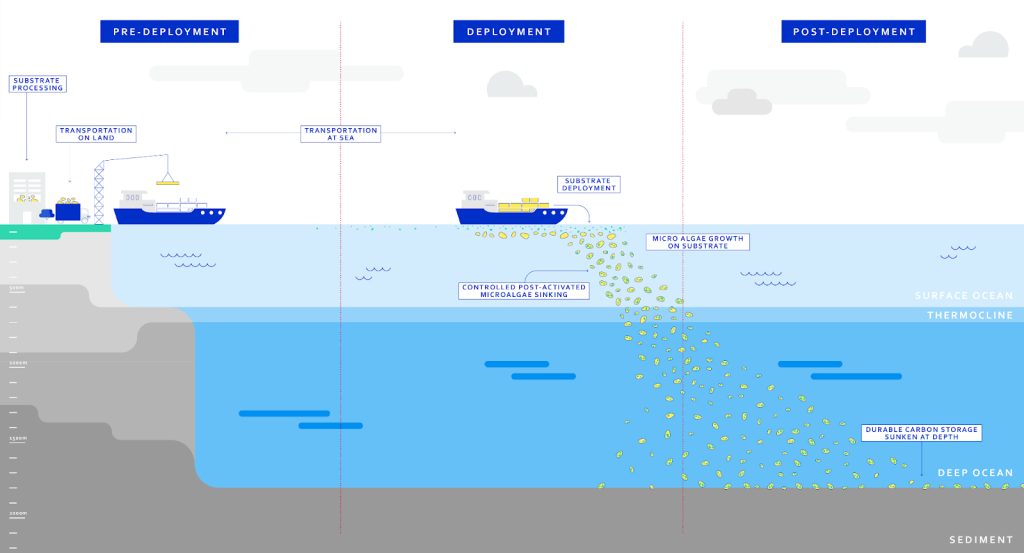Puro.earth is a carbon removal crediting platform that certifies durable carbon removal and issues CO2 Removal Certificates (CORCs) for each net tonne of CO2 removed and stored for hundreds or thousands of years.
Overview of the Methodology
Microalgae Carbon Fixation and Sinking (MCFS) refers to a pathway which captures and sequesters carbon through additional photosynthetic activity of local phytoplankton in the surface ocean and on designated substrates, followed by an intentional and controlled export of that carbon to the deep ocean and ocean sediment.
This methodology sets a global standardized durability for a MCFS activity in the eligible site conditions in 200 years. This is labeled as COR200+. The durability of several hundred years offers a robust and scalable solution for long-term carbon sequestration in the ocean. The durability of 200 years is very conservative for MCFS activities, and it is based on an ultra conservative assumption that all sunken carbon is subject to ocean circulation and not sedimented. The project-specific ocean conditions can lead to much longer durability up to several thousand years.
MCFS activity consist of the following general steps:
Deployment of engineered substrates in regions of the ocean which have high nutrient, low chlorophyll (HNLC) conditions
Growth of additional local microalgae (phytoplankton) on the substrate, consuming carbon-dioxide dissolved in the ocean and micronutrients that are incorporated in the substrate;
Sinking of the substrates and the attached microalgae to the deep ocean;
Storage of the carbon in the slow carbon cycle of the deep ocean.
Re-capturing consumed CO2 in surface waters: The microalgae captured (fixated) carbon was already dissolved in the surface ocean, and by removing that allows for additional carbon uptake by the ocean.
A schematic illustration of the overall process of a Microalgae Carbon Fixation and Sinking (MCFS) activity
Environmental and Social Considerations
While the MCFS pathway offers significant potential for carbon removal, it’s crucial to address and mitigate key environmental and social risks on methodology and project levels. The methodology introduces safeguards and monitoring processes for effectively managing environmental and social risks, such as:
Nutrient robbing across the water column and at regional and global scales
Changes in the carbonate system chemistry
Perturbation of oxygen budgets in the benthic environment
Harmful algal blooms and toxins production
Physical harm to larger organisms in the surface ocean and smothering of benthic organisms
To mitigate environmental and social risks, the methodology requires MCFS projects to perform thorough site-specific environmental impact assessments, including baseline ecological data, and monitor them across the different stages of the deployment.
The public consultation will be open 11 June – 2 July 2025. We welcome feedback from all stakeholders during this period. Your input is invaluable to our methodology development process, ensuring transparency and informed decision-making.
Puro will host a webinar on Wednesday, June 18th, 2025 at 11:00 a.m. Eastern/ 3:00 p.m. UTC covering key aspects.

